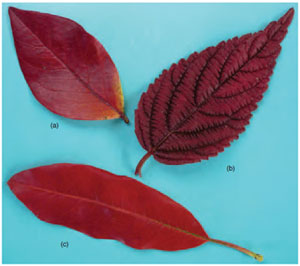The ageing plant
Content
At the end of an annual plant’s life, or the growing season of perennial plants, a number of changes take place. The changes in colour associated with autumn are due to pigments that develop in the leaves and stems and are revealed as the chlorophyll (green) is broken down and absorbed by the plant. Pigments are substances that are capable of absorbing light; they also reflect certain wavelengths of light which determine the colour of the pigment. In the actively growing plant, chlorophyll, which reflects mainly green light, is produced in considerable amounts, and therefore the plant, especially the leaves, appears predominantly green. Other pigments are present; e.g. the carotenoids (yellow) and xanthophylls (red), but usually the quantities are so small as to be masked by the chlorophyll. In some species, e.g. copper beech (Fagus sylvat-ica) other pigments predominate, masking chlorophyll. These pigments also occur in many species of deciduous plants at the end of the growing season, when chlorophyll synthesis ceases prior to the
In deciduous woody species the leaves drop in the process of abscission, which may be triggered by shortening of the day length. In order to reduce risk of water loss from the remaining leaf scar, a corky layer is formed before the leaf falls. Auxin production in the leaf is reduced, this stimulates the formation of the abscission layer, and abscisic acid is involved in the process. Auxin sprays can be used to achieve a premature leaf fall in nursery stock plants thus enabling the early lifting of bareroot plants. Ethylene inhibits the action of auxin, and can therefore also cause premature leaf fall, for example, in Hydrangea prior to cold treatment for flower initiation. |
||||||||||||||||||||||||||





